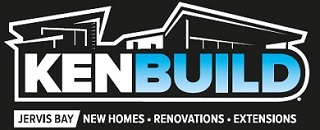
06 Aug WHY YOU SHOULDN’T COMPARE A BUILDER’S SQUARE METRE RATE
Here at AGN Builders, we are often asked to provide a quote based on a square metre rate. Often, prospective clients are shocked when we refuse to do so.
Quoting on a square metre rate is little more than a marketing ploy. A square metre rate is a way to entice new clients through the door by offering a low, seemingly flat price. But, in reality, this type of building price structure leaves the door wide open for a surprisingly high bill once your build is finished.
WHY ARE SQUARE METRE RATES MISLEADING?
Square metre rates are misleading because there really is no such thing as a cost based on square metres. The square metre size of a home doesn’t offer a genuine insight into how much a specific property build will cost.
For example, two 100m2 houses are obviously the same size, but may not be the same shape. If a house is perfectly square at 10m × 10m, it will require 40 lineal metres of external walls. A rectangular or an oddly-shaped home that measures 5m × 20m will require 50 lineal metres of walls. The oddly-shaped house will be more expensive to build because it needs more flashings, windows, cladding and framing.
So, even though the two houses occupy exactly the same amount of floor space, the cost to build the two houses will be very different.
WHAT ABOUT EXTRAS?
The other problem with a square metre quote is that it doesn’t consider all those optional extras. For example, two kitchens of the same size may end up costing a lot more based on the materials and fittings you choose. A basic kitchen with a laminate benchtop will cost a lot less to build than a kitchen with stone benchtops, marble flooring and a built-in espresso machine.
Other things can affect the final cost of a build. It can be helpful to consider the following.
- Services. The area or new floor plan of your home may change the location, number and types of services that you need installed (such as sewerage, power, etc).
- Site costs. Sloping blocks cost more to build on than flat blocks. If your site is home to rubble, boulders or a lot of trees, then there will be a cost to remove them.
- External and internal materials. Different materials will impact on the total build cost. For example, brick vs weatherboard, or tiles vs laminate.
- Internal inclusions. A claw foot bath tub or a rainforest shower head could quickly add to the cost of your new bathroom.
- External inclusions. Do you want a pool or an outdoor kitchen? If so, your build cost will go up.
- Design. As mentioned above, a basic square home will cost less to build than a multi-level home, or a home with an elaborate roof design.
- Room choices. Some rooms are more expensive to build than others. For example, a home with three bathrooms and a powder room will be more expensive than a single-bathroom home, even if the total floor space is the same.
These are just some ways the build cost for a house can be affected. You are always better off to opt for a quote that includes all the specifics of your job, rather than relying on a square metre quote that is, quite literally, nothing more than a number plucked out of thin air. If you do your comparisons based on a real quote, you are more likely to end up with the right builder at the right price.




Sorry, the comment form is closed at this time.